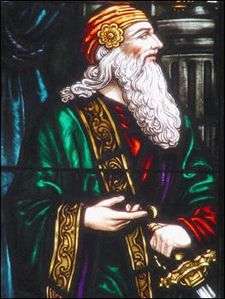Paweł Działyński
Paweł Działyński (Latin: Paulus Dzialinski; born 1560 – died 1609) of Ogończyk coat of arms, was a Polish courtier, royal secretary, ambassador and governor of Bobrowniki and Radziejów.
A hapless ambassador, while faithfully fulfilling his orders to deliver an ultimatum to Queen Elizabeth I from King Sigismund III, he acted not as a legate, but inappropriately and scandalously as a herald, insulting and criticizing the queen.
The scandal

The Muslim Ottoman Empire and Christian England were allies of convenience against Spain. While Elizabeth's armies were fighting Catholic forces in the Low Countries to prevent the Spanish from gaining secure harbours on the Channel coast to stage an invasion, England also served Turkish interests by diverting Spain from focusing on domination of the Mediterranean. In 1580, the Turks threatened to invade Poland from lands located north of the Black Sea. The good will of Poland was crucial to England because trade with countries bordering the Baltic was the source of grain and the all important forest products needed to maintain the navy. Furthermore, English merchants enjoyed preferential trading privileges within the borders of the Polish-Lithuanian Commonwealth. Elizabeth's intercession with the Caliphate was credited with cancelling the invasion and she received letters of praise from then reigning Polish king, Stephen Bathory.[1]
After Sigismund III was elected in 1587, Elizabeth's intelligence service gave notice that an ambassador was in transit and that the deputation was one of amity. On 23 July 1587, the Privy Council instructed the Lord Mayor of London to arrange housing for the diplomat, preferably with a merchant prominent in the Baltic trade. To ensure Elizabeth would not find fault with the preparations, the Lord Mayor was to report the arrangements made. Two days Działyński, arrived at the palace in Greenwich. Brought to the reception hall, he found Elizabeth sitting on the throne under the canopy of state with all her nobles in attendance. The ambassador presented his credentials, and kissed the Queen's hand extended to him―a gesture of royal favour. Działyński then strode to the centre of the chamber without any forewarning of what he was about to say, and, instead of the oration of a legate that everyone anticipated, he couched in respectful words to flatter the monarch being addressed and spoke as a herald. In Latin, he hectored, admonished and criticized the queen, and declared an ultimatum of capitulation to terms or hostile action.[1]
Działyński informed Elizabeth that Sigismund was intending to marry a Catholic member of the Austrian royalty and was sympathetic to the Spanish Crown. The reason for his mission was to complain about Elizabeth's policy of having her navy capture ships of Polish and Hanseatic League merchants trading with Spain. This was intolerable to his sovereign. Hostilities would have commenced if Elizabeth had not rescinded her orders to interdict trade, release the captured ships, and restore the confiscated cargoes or make restitution.[1]
Inspiration
It is widely considered that the character Polonius from Shakespeare's Hamlet was inspired by Działyński.
The Haags Historisch Museum (Historical Museum of The Hague) in The Netherlands exhibits an anonymous painting, depicting Działyński as head of a Polish envoy delegation to the Dutch Republic in July 1597.

